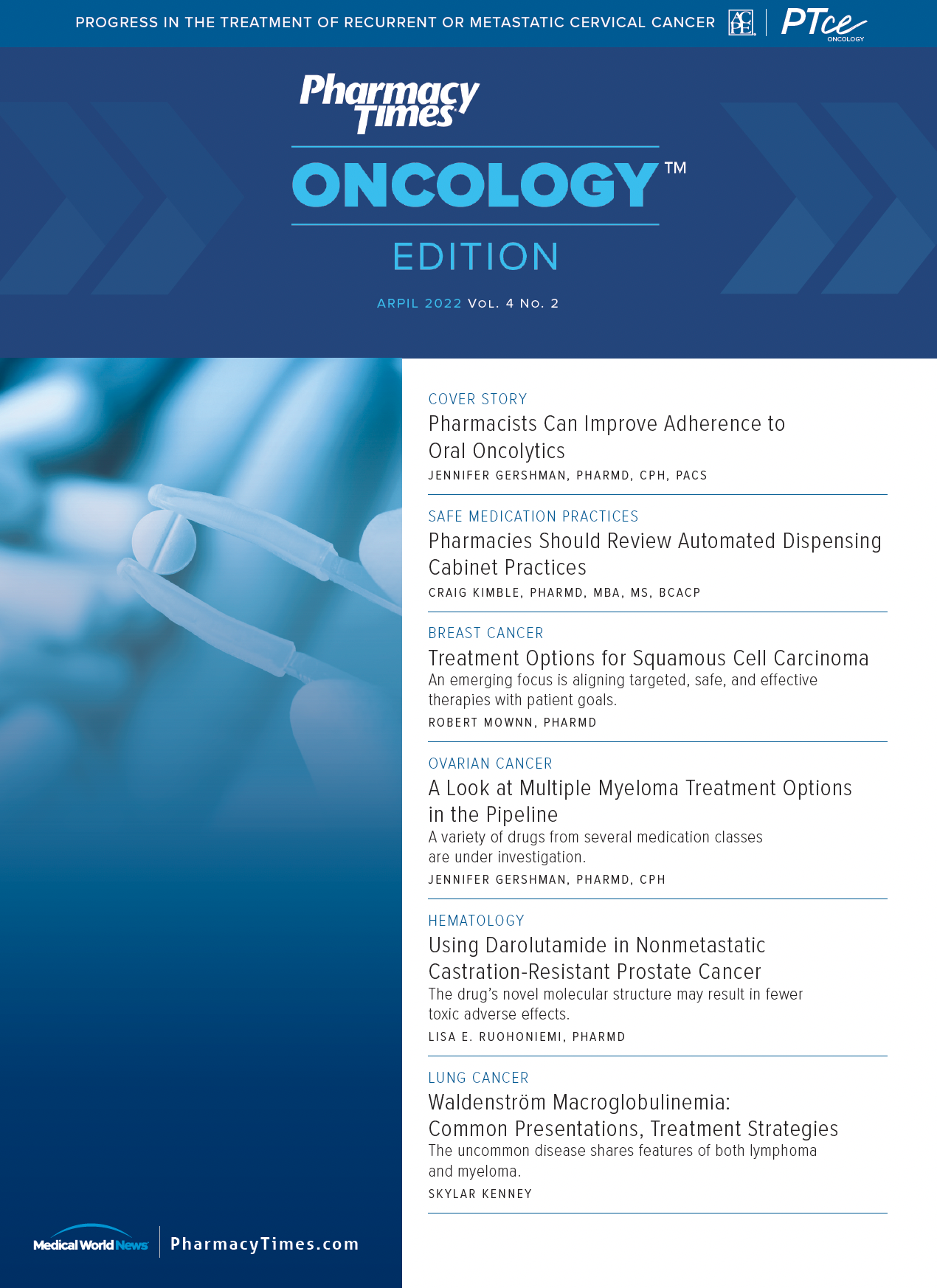Publication
Article
Pharmacy Practice in Focus: Oncology
A String of Clinical Pearls for Immunotherapy in Non−Small Cell Lung Cancer
An expert panel engaged the audience in a live virtual symposium and case discussion on immune checkpoint inhibitors (ICIs) in the first-line treatment of non−small cell lung cancer (NSCLC) at the 2021 ASHP Midyear Clinical Meeting.
An expert panel engaged the audience in a live virtual symposium and case discussion on immune checkpoint inhibitors (ICIs) in the first-line treatment of non−small cell lung cancer (NSCLC) at the 2021 ASHP Midyear Clinical Meeting in a presentation titled Updates in Frontline Therapy Using Immune Checkpoint Inhibitors: Clinical Pearls for Pharmacists Involved in Patient Care.
Latha Radhakrishnan, PharmD, BCPS, BCOP, began the discussion by highlighting the first decision point in NSCLC is based on presence or absence of driver mutations. She noted patients without driver mutations are candidates for ICIs with at least a dozen different approvals for first-line treatment of NSCLC in the past 7 years. She recommended the following considerations for choosing among monotherapy, combination immunotherapy plus chemotherapy, and 2 immunotherapies: (1) patient clinical status including performance status and comorbidities; (2) tumor characteristics including histology and tumor mutational burden (TMB); (3) programmed cell
death ligand (PD-L1) expression (<1%, 1%-49%, and ≥50%). Dr Radhakrishnan presented an algorithm to illustrate treatment decisions based on squamous or nonsquamous histology and PD-L1 expression status. She explained that monotherapy with atezolizumab, cemiplimab, or pembrolizumab is appropriate for patients with PD-L1 expression ≥50%. For patients with PD-L1 expression of ≥1%-49%, or PD-1 expres- sion <1%, there are multiple options of ICIs, atezolizumab, pembrolizumab, or nivolumab in combination with chemotherapy. Additionally, for patients in these categories of PD-L1 expression, in which a regimen without chemotherapy is a preferred option, the combination of nivolumab and ipilimumab is a category 1 option. Dr Radhakrishnan wrapped up by emphasizing the use of a combination of immunotherapy and chemotherapy as first-line treatment to ensure patients receive the potential benefits of these therapies before patients clinically decline and are unable to receive subsequent therapy.
Jessica Michaud Davis, PharmD, BCOP, CPP, examined conflicting data on PD-L1 expression to predict response to treatment. She described challenges with implementation of PD-L1 in clinical care including:
• Lack of consensus for quantification and scoring
• Availability of multiple diagnostic tests and assays
• Variability in tumor sampling location, timing, and sample
• Use as a predictive or prognostic biomarker
In addition to PD-L1 and TMB, Dr Davis also introduced tumor infiltrating lymphocytes as an emerging biomarker in NSCLC that confers prognosis but is not presently used to guide treatment decisions.
Jordan McPherson, PharmD, MS, BCOP, rounded out the discussion with a focus on prompt recognition of symptoms and early intervention of less common immune-related adverse events (irAEs). He cautioned pharmacists to be aware of rare irAEs including nephritis, myositis, myocarditis, and sicca syndrome, noting the potential for high morbidity or mortality if irAEs are not quickly identified and treated. Dr McPherson emphasized that early immunosuppressive therapy could make the difference between irAE recovery and organ dysfunction or death.
Jordan McPherson, PharmD, MS, BCOP, underscored the need for “pharmacists to educate patients on irAEs to help patients become invested in their care during treatment with ICIs with a goal of prompt communication of symptoms by patients and caregivers, even for rare irAEs.”
In the final portion of the presentation, the trio engaged the audience in 3 patient case discussions to illustrate management principles of immunotherapy in first-line NSCLC.







